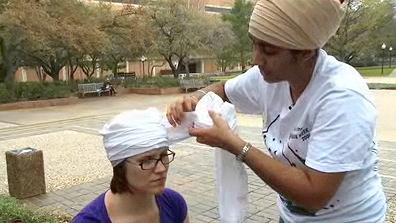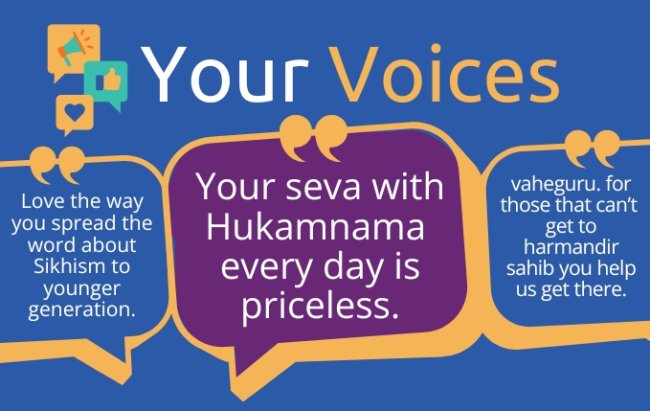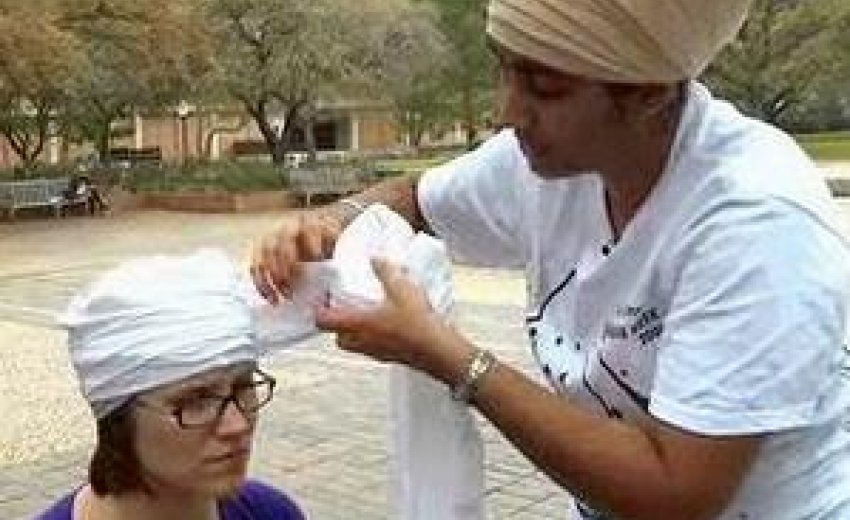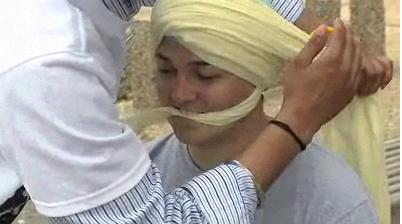The line outside the University of Texas at Arlington's library this week wasn't for intramural sign-up, a spring break travel package or even hot dogs sold off the grill for a fraternity fundraiser... It was for turbans.
Sikh volunteers swirled blood-red, neon orange and aquamarine cloth around the heads of students as they explained why an item intended to distinguish the Sikh religion has threatened its identity.
UTA is one of five North Texas college campuses where Sikh students tied turbans and debunked myths for their spring break.
Billed as "Sikh Turban Week," the event is intended to clarify the misconceptions ignited after Sept. 11, detail the significance of the turban for Sikhs and showcase one of the region's fast-growing communities.
"It's nothing to do with Osama bin Laden or terrorism," said Jaipreet Singh Suri, the president of Southern Methodist University's Sikh Student Association and organizer of the event. "The message we want to go out is that the majority of people who wear turbans are Sikh and not Hindu or Muslim." The SMU students recruited additional volunteers from the region's five gurdwaras – the Sikh place of worship – and raised about $7,000 from among the 5,000 Sikhs who live in the Dallas-Fort Worth area. Most Sikhs originally come from the Punjab region in northwest India.
The SMU students recruited additional volunteers from the region's five gurdwaras – the Sikh place of worship – and raised about $7,000 from among the 5,000 Sikhs who live in the Dallas-Fort Worth area. Most Sikhs originally come from the Punjab region in northwest India.
The idea took shape last spring when Suri, spurred by the persisting questions and accusations surrounding his turban, decided to host a "turban day" at SMU. He offered gift cards to students who agreed to wear a turban for three hours and tell others why they were doing so. The participants signed a paper that said they wouldn't smoke, drink alcohol or take off the turban during their assigned time. Students poured in long after the gift cards were gone.
This year, he moved beyond his own campus. The Sikh students are giving out $10 gift cards for Subway, Starbucks and Chipotle to the first 100 people to wear the turban for two to three hours at each campus event. By mid-afternoon on Tuesday, volunteers had tied more than 170 turbans and had to send people away because they'd run out of cloth.
It took Keith Jackson only two hours to understand the heft of American bias felt by Sikhs. The 31-year old heavy-equipment operator noticed the crowd in front of the library and decided to don a navy turban and an "Ask Me Why I'm Wearing a Turban" button. Then he went to lunch at Subway.
One man asked Jackson's colleague, who also wore a turban, if he was part of the Taliban. Another man told them that bin Laden was their big brother. Someone on a bike started screaming at them. Everyone stared.
"I learned there's still a lot of prejudice out there," he said, shaking his still-turbaned head. He accepted the gift card but said he would have participated for free.
Events such as these are "baby steps," said Rajinder Singh, a software engineer from Allen who teaches Sikh history at the Richardson gurdwara.
The religion lacks a public figure or an established network to explain that Sikhism does not align itself with Islamic law and rejects the Hindu caste system, he said. Turban Week is an attempt to spur that discussion, said Singh, who pointed out that the first victim of a hate crime after 9/11 was a Sikh. Even in India, Sikhs have long been persecuted.
"If you are asked to strip, it's the same as asking me to take off my turban," he said. "It's a form of identity" and a reminder of faith. Everyone can wear this kingly crown because all are on equal standing, he said.
The religion mandates both genders cover their head, but it's become more culturally acceptable for women not to do so. Almost everyone who wears a turban in the United States is Sikh. About a half-million Sikhs live in the United States, with the largest population in California. Sikhism is the fifth-largest religion in the world and has at least 24 million followers worldwide.
The turbaned man may become a more common sight in North Texas as Sikhs relocate from California in search of better job and housing prospects. At the Richardson gurdwara alone, about 100 families have arrived from California in the past several years, said Inderpal Singh, who represents the gurdwara for the World Sikh Council-American Region.
Sikhism, whose origins date only to the 15th century, draws on aspects of Hinduism and Islam but is a separate religion. Guru Nanak, the first of ten Gurus, or holy teachers, pushed the faith's principles of egalitarianism, community service and moral purity. Along with the turban, the religion has five other tangible symbols of faith: uncut hair and beard, a wooden comb worn in the hair, an iron bracelet, a small ceremonial sword and a special type of underwear.
The most distinguishable article of faith – the turban – ends up conjuring notions of Islamic fundamentalism for many Americans, who have difficulty distinguishing the range of cultures from Egypt to India, said Robert Hunt, the director of Global Theological Education at SMU.
"In Dallas and elsewhere, Sikhs have flown American flags and worked hard," he said.
Not everyone appreciated the turban invitation this week.
"I don't want to be around it," said Jarrett Crowe, a 24-year old UTA student from Tampa, Fla., who served in Iraq. "It takes me back. Too many bad memories," he said glancing at seated students having their heads wrapped.
It wasn't the Iraqis who wore the turbans but third-party nationals who worked on the base, he said. Still, the turbans rekindle thoughts he is trying to forget.
He walked away quickly.
Ali Crocker had the opposite response. The 20-year-old political science major from Mansfield sported a vivid, mauve turban as she admitted she'd only heard of Sikhism in passing and viewed it as a sect of Islam.
"I had no idea," she said, reading over the stack of yellow handouts. Then she too walked away, passing them out as she went.


